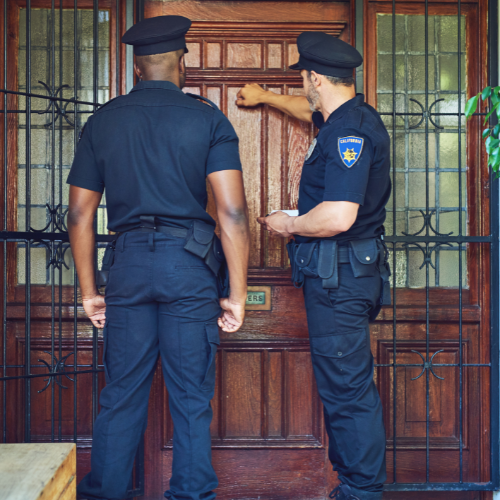In Massachusetts, harassment can include threats, physical violence, property damage, or actions that are intended to control or intimidate another person. Examples are persistent unwanted contact, following someone, or direct verbal threats. Harassment becomes criminal when it is intended to cause and does cause fear, intimidation, abuse, or damage to property.
Introduction to Harassment Prevention Orders
Massachusetts takes the safety and peace of mind of its residents seriously, especially when it comes to harassment. Harassment prevention orders, commonly known as 258E Orders, serve as legal shields, protecting you from continued harassment. These orders are not limited to domestic situations and can be applied in a variety of contexts, including but not limited to:
- neighbor disputes,
- workplace harassment, or
- ongoing threats and intimidation from any individual.
Obtaining a harassment prevention order is a civil procedure that can result in a court order for your harasser to stop their behavior. It’s designed to be accessible to individuals without the need for an attorney; however, legal guidance can often be helpful. The process respects your need for timely protection, and in urgent situations, the court may issue a temporary order immediately.
What Constitutes Harassment
in Massachusetts?
In the Commonwealth of Massachusetts, harassment is defined as three or more acts of willful and malicious conduct aimed at a specific person that are intended and indeed do cause fear, intimidation, abuse, or damage to property. Such conduct goes beyond mere annoyance; it deeply affects a person’s sense of safety and well-being. It is important to note that harassment can be physical but also includes actions like:
- stalking,
- repeated messaging, and
- other forms of unwanted contact.
To meet the threshold for a harassment prevention order, the behavior in question must be proven in court to be more than just irritating. It must significantly disrupt your peace or make you feel under threat. Documentation of incidents, including:
- dates,
- times, and
- the nature of the harassment,
is crucial when presenting your case to the judge.
Filing a Harassment
Prevention Order
The process begins with filing a petition at your local Massachusetts court. If the harassment has caused you immediate danger, you may be granted a Temporary Harassment Prevention Order on the same day you file. The court then schedules a hearing, typically within 10 days, to decide if a long-term order is necessary. This is when you present evidence and testify about the harassment and why you need the order.
At this two-party hearing, it’s important to clarify that, during the hearing for a long-term order, the alleged harasser has the right to present their side of the story. It’s a critical moment where both parties can argue their case before a judge. For those unfamiliar with the legal system, navigating this process can be intimidating, but it’s structured to ensure fairness and the opportunity for both sides to be heard.
After the Order Is Issued
Once a Harassment Prevention Order is issued, it provides immediate legal protection. The harasser is ordered to stop the behavior and may be required to stay away from:
- you,
- your home,
- your workplace, and
- your school.
The order can also prohibit the harasser from owning or possessing a firearm and may provide other specific protections tailored to your situation.
Violating a harassment prevention order is a criminal offense in Massachusetts. If your harasser does not comply with the order, they can be arrested and charged. As a victim, you should report any violation to the police immediately. It’s essential for your continued safety and the enforcement of the order.
Challenges and Considerations
Obtaining a Harassment Prevention Order is often an emotionally charged process. The burden of proof rests on you, which can be a heavy weight to carry, especially if the harassment has been subtle or there are few witnesses. It’s not uncommon for petitioners to feel vulnerable during this time, as they’re recounting distressing events in a public courtroom.
Moreover, the impact of an order extends beyond the immediate relief it provides. It can have long-lasting effects on both you and your harasser, legally and personally. This underscores the importance of understanding the full implications of the order.
Legal Support and Resources
While the process is designed to be navigated without an attorney, you may find that having experienced legal support can help you feel more prepared and confident. Attorneys knowledgeable in Massachusetts’ harassment prevention laws can assist in gathering evidence, preparing for the hearing, and understanding the potential outcomes.
Help Getting a Restraining Order in Massachusetts
If you’d like help getting a Restraining Order without paying an expensive attorney, we can help. With our Legal Coaching we can walk you through every step to make sure you’re ready for your hearing. The first thing to do is see if you qualify for a Massachusetts Restraining Order. Click on the link below to see if you qualify for either type of Restraining Order.
Legal Disclaimer
This article is intended for informational purposes only and does not constitute legal advice. Please consult with an attorney to discuss your specific circumstances and receive tailored guidance.

I have been practicing law in Massachusetts since 1995. My focus is in the areas of criminal and family law. I’m dedicated to providing high-quality legal help at an affordable price. I practice throughout Massachusetts. I earned my MBA from the University of Rhode Island in 2023. I earned my JD from New England School of Law in 1994. I earned my BA from Rhode Island College in 1990.


